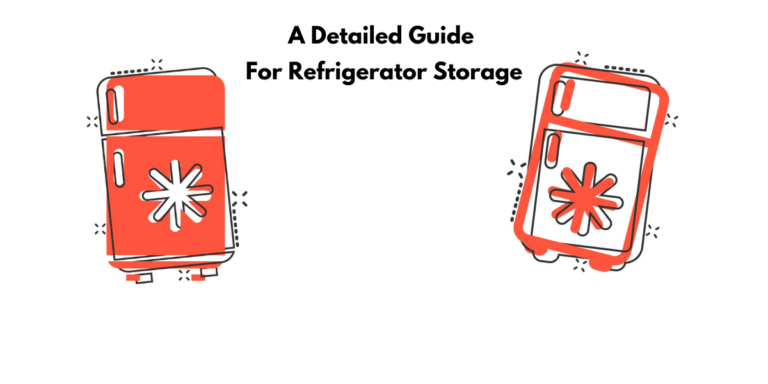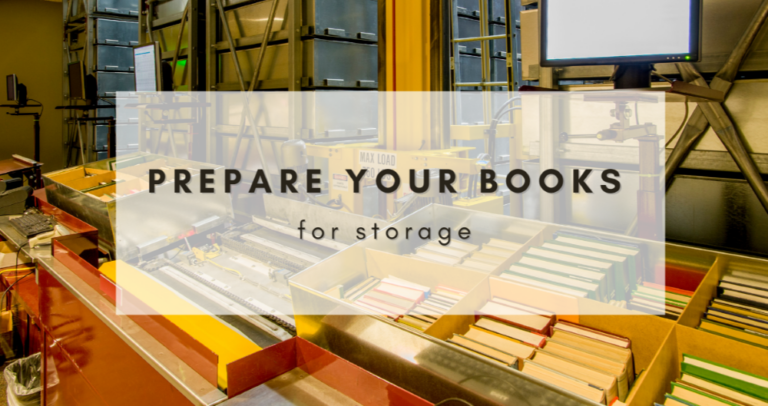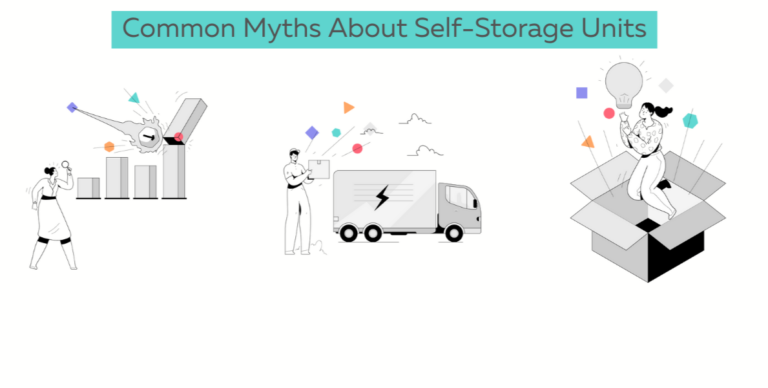How To Choose The Right Storage Unit Size: A Guide For Beginners
Introduction to Storage Unit Sizing
Understanding the Basics of Storage Units
Storage units provide a versatile solution for individuals seeking extra space to store their possessions, whether transitioning between homes, decluttering, or needing long-term space for belongings that do not fit comfortably in their current living space. Simplifying the quest for the right storage unit begins with understanding the fundamental choices available.
Why Choosing the Right Size Matters
Choosing the correct size for your storage unit is paramount for several reasons. Primarily, it impacts your financial outlay. Renting a unit that’s too large will lead to unnecessary costs, while a unit that’s too small means you won’t have enough space for all your items, and you may end up renting additional space or a larger unit down the line.
Furthermore, selecting an appropriately sized unit maximizes the utility of the space. A well-sized unit allows for organization within the unit itself, preventing damage to your belongings from overpacking and making it easier for you to locate and access items when needed. It’s a careful balance between what you need to store, how long you will store it, and the cost you’re willing to incur.

Starting with an Inventory
Listing Your Items: The First Step
Before you embark on renting a storage unit, initiating a thorough inventory of your possessions is an essential first step. This inventory serves not only as a record of what you plan to store but also aids in determining the most suitable size for your storage unit.
Assessing Bulky and Irregularly Shaped Items
When you tally your items, pay special attention to bulky and irregularly shaped ones. These items, including furniture, appliances, equipment, and other large pieces, are frequently the most challenging to store efficiently. Measuring their dimensions will be crucial in estimating the amount of storage space needed.
Evaluate each bulky item’s length, width, and height, then calculate its volume. Remember that these items often cannot be stacked and may require extra space around them for access and ventilation. Considering the unique shapes and storage requirements of these items will help prevent renting a storage unit that is too small to accommodate your bulkier possessions.
Different Storage Unit Dimensions Explained
Small Units: Perfect for Personal Items
Storage units that fall in the smaller realm, such as the 5’x5′ units, are ideal for individuals or businesses that require additional space for a limited amount of personal items. These units resemble the size of a walk-in closet and can typically accommodate items like a small mattress set, a chair or dresser, sports equipment, and several boxes.
If you’re a minimalist or someone who needs to store seasonal items like holiday decorations, winter gear, or a few pieces of hobby-related equipment, these units are perfect. Such a unit is also well-suited for students who need summer storage for dormitory items or individuals who have a few extra items that they want to keep but don’t have the necessary space at home. Being the smallest standard unit available, this size is an economical choice for those with modest storage needs.
Medium Units: Ideal for Apartment Dwellers
Medium-sized storage units, typically ranging from 5’x15’ to 10’x10’, are excellent for those living in one- or two-bedroom apartments. With the capacity to hold the equivalent of an entire apartment’s furniture and boxes, these units provide the flexibility necessary during significant life events such as moves or renovations.
A 5’x15’ unit, with its 75 square feet of floor space and 600 cubic feet of volume, can usually accommodate furnishings from a small apartment, including a living room set and a dining room suite. This size is sufficient if you’re looking to store a bedroom set, a sofa, some extra chairs, and several boxes. It’s an accessible option for those in between homes or those undergoing a home remodel who need a temporary storage solution.
For people considering storing large appliances like refrigerators or washers and dryers, a 10’x10’ unit may be more appropriate. Medium-sized units are also a popular choice for business storage needs such as equipment, inventory, and materials, offering a good balance between space and affordability.
Choosing a medium unit allows for some room to move around within the storage space, making it easier to organize and retrieve items without moving everything around. It’s also a good fit for those looking to declutter their living space while still keeping their belongings accessible.

Large Units: Best Suited for Homeowners
Homeowners looking to store the contents of a larger house, including multiple bedrooms, large furniture, and a multitude of boxes, will find large storage units to be the most suitable. These units start at sizes like 10’x15′ and can go up significantly from there, such as the notably expansive 10’x30′ units.
The 10’x20′ storage units, often equated to a one-car garage, offer 200 square feet (1,600 cubic feet) of storage space, making them sufficient for a full home’s worth of goods – living room, dining room, full kitchen, and multiple bedrooms. This size is also commonly used for storing large quantities of boxes or even vehicles and motorbikes during off-seasons.
For those seeking an even more substantial storage solution, the 10’x30′ unit, which is similar to a standard one-and-a-half car garage and delivers a massive 300 square feet (2,400 cubic feet) of space, can typically handle the belongings of a large house comfortably. It can accommodate bulky items such as pianos, multiple large appliances, or full-size dining room sets and still have room for boxes and additional odds and ends.
Large storage units are also ideal for commercial use, including storing inventory, materials, or equipment long-term. Individuals undergoing major life events, such as downsizing or relocating for work, may utilize these units to house their belongings until they are settled in their new situation. For those with even more extensive or specialized storage needs, such as boats, trailers, and larger vehicles, extra-large units exceeding 300 square feet might be necessary.

Special Considerations for Unique Items
Storing Vehicles, RVs, and Boats
Whether you aim to declutter your driveway, shield your vehicle from weather-related wear, or simply require a secure spot for your mobile assets during periods of non-use, a storage unit designed to accommodate vehicles can offer the perfect solution.
For most cars, a unit size of up to 20 feet in length will suffice. These spaces are ideal for vintage automobiles, standard cars, and small trucks, providing enough room while ensuring protection against the elements and any potential on-street damage.
For recreational vehicles (RVs) and boats, which typically demand more space due to their substantial size, units up to 35 feet long are commonly used. These storage options afford ample room for larger motorhomes, campervans, and boats, ensuring that your valuable leisure investments remain safe and intact when they’re not cruising on the highway or bobbing on the water.
For oversize vehicles, such as large boats, trailers, or commercial vehicles, units stretching up to 50 feet are available. Storage facilities may offer uncovered, covered, or enclosed options at this size, depending on the level of protection you seek and the advised care for your specific vehicle type.
Remember, when storing an RV, boat, or vehicle, it is advised to conduct proper maintenance before storage – like changing the oil, topping up fluids, and ensuring the battery is disconnected – to keep the vehicle in good condition. Moreover, you should always check with the storage facility regarding any specific requirements or prohibitions before deciding on a particular unit for these specialized storage needs.
Climate-Control Needs for Sensitive Belongings
When storing items that are sensitive to temperature fluctuations, humidity, or both, climate-controlled storage units become a necessity rather than a luxury. These controlled environments maintain a steady temperature typically between 55 and 85 degrees Fahrenheit, which is vital for protecting your valuable and delicate items from extreme weather conditions.
Leather and wooden furniture may crack or warp, wooden musical instruments can deteriorate, and electronic components might become damaged in conditions that are too hot, cold, or damp. Additionally, materials like paper and fabric are susceptible to mildew and mold when stored in high humidity levels, and precious photographs can fade or stick together if not kept in climate-controlled conditions.
Collectibles such as artwork, wine, vintage clothing, and antiques can lose significant value if not stored correctly, emphasizing the importance of taking the climate into account when selecting a storage unit. Acquiring a climate-controlled space will ensure that your most sensitive belongings remain in the same condition as when they were first stored.
While climate-controlled units might come at a higher cost, the peace of mind and protection they provide for your valuable items could save you from costly replacements or restorations in the long term. It is a wise investment for anyone storing items that would be difficult or impossible to replace and thus should be factored into your decision-making process when determining the right unit size for your storage needs.

Organizing Your Storage Space
Tips for Efficient Packing and Accessibility
Maximizing the utility of your storage unit isn’t solely about choosing the right size – it’s also about how effectively you pack and organize your stored items. Adhering to some key packing tips can help you maintain order, protect your belongings, and ensure that your items are easily accessible when you need them.
Use Uniform Boxes: Opt for sturdy moving boxes or heavy-duty plastic containers of similar sizes to simplify stacking and maximize space.
Label Everything Clearly: Affix clear labels to each box and container, detailing the contents. This will help you quickly locate items without unnecessary searching or box shuffling.
Prioritize Based on Access: Store items you’ll need to access frequently toward the front of your unit. Conversely, place items you use less often toward the back.
Protect Fragile Items: Wrap fragile items individually and store them at the top of box stacks or on shelves to prevent damage.
Leave a Pathway: Organize your unit by leaving an aisle down the center or along one side, allowing for easy access to items stored at the back.
Heavy Items on the Bottom: Store heavier items at the bottom of your unit and lighter boxes or objects on top to avoid crushing.
Utilize Vertical Space: Maximize vertical space with free-standing shelving units. This will help you to avoid hazardous stacks and make better use of the space.
Consider the Use of Furniture Covers: Drape furniture with covers or blankets to protect against dust and scratches.
Disassemble Bulky Furniture: Whenever possible, disassemble large furniture items to save space and protect them from damage during storage.
By implementing these tips when packing your storage unit, you’ll ensure that your belongings are well-organized, undamaged, and accessible, thereby making the most of your rental space.
Do’s and Don’ts When Filling Up Your Unit
Managing your storage unit effectively involves more than just organizing; it’s also critical to heed certain precautions to maintain the safety and condition of your items. Here’s a straightforward list of do’s and don’ts when it comes to filling up your unit:
Do:
- Do Check on Your Unit Regularly: Regular visits will help you spot any potential issues like leaks or pests early on.
- Do Clean Items Before Storing: Ensure that all items, especially appliances and furniture, are clean and dry to prevent mold and odors.
- Do Use Pallets: If possible, elevate your belongings on wooden pallets to protect against any potential water damage.
- Do Maintain an Inventory: Keep an updated list of everything you have in storage, which will be handy for insurance purposes and staying organized.

Don’t:
- Don’t Overpack Boxes: Heavy boxes are more challenging to move and more likely to fall, potentially causing injury or item breakage.
- Don’t Stack High: Specifically, avoid stacking boxes more than four high, as higher stacks can be unstable and dangerous.
- For furniture, sticking to no more than two pieces stacked is advisable to avoid tipping and damage.
- Don’t Store Perishables: Items like food can attract pests, which can lead to broader infestations.
- Don’t Store Hazardous Materials: Flammable, explosive, or toxic substances are not only a potential hazard but also typically violate storage facility policies.
By following these do’s and don’ts, you minimize the risks of accidents, damage, and extra costs, ensuring that your storage unit serves as a safe and secure home for your possessions.
FAQs on Choosing Storage Unit Size
What Is the Most Popular Storage Unit Size?
The most popular storage unit size is the 10-by-10-foot unit. This size is equivalent to half the space of an average spare bedroom, offering approximately 100 square feet or 800 cubic feet of space. It’s the size many people find the right balance between ample storage and cost-effectiveness.
A 10’x10′ unit can store the contents of a one-bedroom apartment including major appliances, furniture, and multiple boxes. This versatility in storage capacity makes it a favored choice for a range of storage needs, from individuals in the midst of moving, to businesses needing extra space for inventory, to homeowners looking to declutter or store seasonal items.
Its popularity is a testament to its functionality for short-term storage during a transition, such as an apartment move, or for more permanent solutions, like freeing up space in a garage or holding items during a room remodel. With its moderate size, customers find it to be a practical option for various storage scenarios without overcommitting to space they don’t need or trying to cram items into a space that’s too small.

How Can I Estimate How Much Space I Need?
Estimating the amount of storage space necessary can be deceptively challenging. Utilizing tools and techniques to calculate the volume of your belongings will help in selecting the ideal unit size. Here’s a step-by-step approach:
- List and Measure Your Items: Begin by creating a detailed inventory of everything you plan to store, including dimensions (length, width, and height).
- Use an Estimator Tool: Many storage companies provide online estimator tools where you can input your item dimensions for a suggested unit size.
- Calculate by Volume: Determine whether you prefer to calculate space in square feet (sq. ft.) — which is length multiplied by width, or in cubic feet (cu. ft.) — which additionally incorporates the height dimension.
- Visualize the Space: Consider using painter’s tape to mark out the floor dimensions of various unit sizes in an open area to get a feel for the space available.
- Consult Storage Guidance: Check out guides for standard items provided by storage companies. For example, Extra Space Storage offers a moving calculator to assist in estimating how much room you’ll need.
- Think Vertically: Remember that you can stack items, so the internal height of the storage unit can provide additional space.
Keep in mind that while perfectly estimating your required space might not be possible, it’s typically better to opt for a slightly larger unit than required than one that’s too small. This leaves you with maneuverability and the ability to add items in the future if necessary. Always round up in your estimations to accommodate for irregularly shaped items and the convenience of access.
Can I Change My Unit Size If I Misjudge the Space Required?
It’s relatively common to misjudge how much storage space you need, but most storage facilities are quite accommodating if you find you need to switch to a different unit size. Here’s what to consider when thinking about changing your storage unit:
- Contact the Facility: Reach out to the storage facility as soon as you realize you need a different unit size. They can tell you what sizes are available and what the process would be for switching.
- Review Your Contract: Look over your rental agreement to identify the facility’s policies regarding transfers, including any associated fees or notice periods.
- Timing Matters: Remember that availability can change quickly. If you decide to downsize or upgrade your unit, the sooner you make that decision, the more options you’ll likely have.
- Additional Costs: Be prepared for potential changes in the monthly rental rate. Upsizing will generally increase the price, while downsizing may save you money but might come with a transfer fee.
- Consider Transition Logistics: Switching units means you’ll have to move your items from one unit to another, which could require additional time and possibly rental equipment or help.
Storage facilities are in the business of accommodating a range of customer needs, including changes in unit size. By maintaining an open line of communication with the facility, you can facilitate a smooth transition to a unit that better fits your storage requirements.
Are Storage Units Secure for Valuable Items?
Security is a pivotal factor when considering storage facilities, especially for individuals looking to store valuable items. Here’s what you should know about the safety of storage units for your prized possessions:
Security Measures: Reliable storage facilities are equipped with various security measures to safeguard your belongings. These include gated access, video surveillance, individually alarmed units, on-site management, and adequate lighting.
Climate Control: For items that are sensitive to temperature and humidity, climate-controlled units can protect against environmental damage, thereby offering an additional layer of security for valuables like antiques, electronics, and important documents.
Insurance Coverage: While storage facilities take measures to protect your belongings, it’s advisable to ensure that they are covered either through your own insurance policy or a storage insurance plan offered by the facility. This ensures compensation for the value of your items in case of unforeseen events, such as theft or natural disasters.
Internal Locks: Most storage units require you to provide a lock, giving you control over who has access. Investing in a high-quality disc lock or cylinder lock can provide better security than a standard padlock.
Visibility and Accessibility: Well-lit and frequently accessed facilities often deter potential theft due to increased visibility and activity, so consider the location of the facility and the unit within it.
Personal Due Diligence: Ultimately, you’re responsible for deciding what to store. Avoid keeping highly sensitive personal information or invaluable heirlooms in a storage unit, as the inherent risk, however small, always exists.
Most storage units are very secure, but no storage facility can guarantee complete immunity from theft or damage. Therefore, it’s essential to consider the facility’s security features, the value of your items, and the level of risk you’re comfortable with when deciding to store valuables in a storage unit.
- Commercial Storage Units for Rent: Is renting out self-storage units a feasible investment? - December 22, 2022
- How To Choose The Right Storage Unit Size: A Guide For Beginners - March 17, 2022
- Understanding Self Storage Insurance: What It Covers And How To Compare - September 29, 2021







